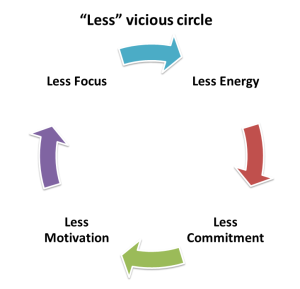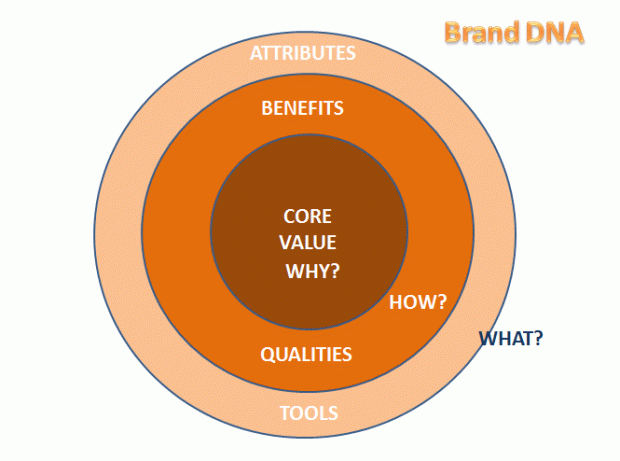Posts Tagged Motivation
Getting them on it right: focus, energy, commitment and motivation
Posted by rsa in Agile, Leadership, Product management, SCRUM, Team on March 1, 2012
“Problems cannot be solved by the same level of thinking that created them.” Albert Einstein.
I was about to write another one in the scope of “Getting them…” targeted for Product Owners (PO), however thought that before getting them (stories) out of the sprints it is crucial for sprint success how to get them (team members) on it right…
So story going to be about how PO influences team focus and instills feeling of urgency and what happens if he/she’s not…
To understand this we would need to get back to Sprint Planning meeting (SPM). When PO makes final accords, accepts team commitment and sends team out to the sprint it is very important for everyone to stay focused on the Goals PO presented.
If PO jumps in mid-sprint, having unplanned acceptance criteria, special circumstances, etc… this sends a message: goal is void, direction is being changed, things that had been agreed at SPM are not valid anymore.
Scrum is tense way of delivering software. Constructive tension comes from high commitment and builds up high velocity (aka deliver fast lean principle) that is impossible to achieve without addressing limited and fixed number of issues within timebox.
Let’s understand how this works…
Higher velocity is achieved by staying focused on what is most important. As soon as this vector changes, something that had been important yesterday, becomes less important today, or something else emerges focus drifts away.
But velocity is not single thing this impacts…
More drastic effect this has on team morale, since besides team has to conduct context-switch (that has it’s own impact: see another related post here), but also it throws team into “Less” vicious circle that is:
- Less focus that eats up energy and leads to …
- Less energy that impacts productivity and leads to …
- Less commitment that impacts desire to work and leads to…
- Less motivation that drain attention and lead to …
- Less focus …
- Etc …
Understanding this will help PO to plan sprints in the way to avoid de-focus, protect sprints from interference (and team members from de-focus) and minimize impact of unplanned issues.
Of course fire-fights happen, of course they are important, but it makes sense to dive in root causes and build real quality in rather than fight consequences… and eventually turn circle back into “More..” :).
What drives us? 5 simple motivation types
Posted by rsa in HR management, IT Management, Leadership, Team on January 17, 2012
 “Motivation is when your dreams put on work clothes “.
“Motivation is when your dreams put on work clothes “.
Benjamin Franklin
Knowing what drives yourself and your peers is an esssential key to manage self and people around you. Being it work or private life.
There are many different classifications of what keeps one motivated. I would like to share simple one I apply and found it practically useful to understand what can keep myself and my colleagues motivated (or de-motivated)…
Simply 5
It is based on 5 simple types of motivators – key motives (or incentives) that influence our behavior:
1. Achievement: I will achieve that (to prove myself that I can do it), to feel better. Get it DONE is important for me! Capitalization by investing into the self is usually a real driver for this type of motivator. A burning desire to achieve certain goal has some purpose (to get better, stronger, experienced, more professional, etc…) and constant challenge that keeps me “running”. If such a person lacks challenge or does not sees the “horizon” of self growth he/she starts feeling de-motivated.
2. Social: will do it to earn respect and praise of my colleagues (spouse, friend, etc..). People, having social motivator as a key one care for others opinion more and work towards shaping them to comply to their expectations. If socially driven person doesn’t get praise (or worse gets blame instead) for a while he/she starts get de-motivated.
3. Reward: I will do it to get a reward. The ‘carrot’ thing that can be money but also career growth, benefits, etc… This motivator is easiest to claim, while weakest to retain. Some roles do require reward motivator (e.g. salesguys), but beware of people that have only this motivator as a key one.
4. Process: I like it.I like to do my painting, knitting, etc.., primarily not for getting it done but for the process itself. I enjoy making changes and pace, creativity, investigations, etc. Key root of this type of motivation is freedom to act in the scope of desired and beloved type of activity. As soon as you put a pressure on such a person he/she gets de-motivated.
5. Idea: I believe in that. Strongest one (and only one that actually can be grown up). People do revolutions driven by idea. Those guys stay if company values match with their own value stream. They care less about other motivators if this is the case. If views of such a person do not match with employer/bosses he/she becomes de-motivated and eventually leaves the company.
So what?
There are no right or wrong, good/bad motivators. All that makes difference that different types of activities/roles at your company require different qualities (you know the best), that one needs to recognize and consider when staffing.
Here’re some examples of types of motivators that usually (but not necessarily) suit better different positions/roles:
- Sales guy: usually driven by Achievement + Reward motivators;
- Account manager: usually driven by Achievement + Process motivator;
- Programmer: usually driven by Process+ Achievement motivator;
- HR manager: usually driven by Social + Idea motivator;
- CEO: usually driven by Idea + Achievement motivator;
- etc…
Driving motivators
Usually each of us have 1-2 motivators as a key ones. The trick is how to recognize and motivate using that information (should have another post on this).
To be continued…
Thanks to Vlad Zavadsky (an inventor of the approach and business trainer at Runa Consulting group).
Team DNA: how to Brand up your team
Posted by rsa in Agile, Branding, HR management, IT Management, Leadership, SCRUM, Self-organized on November 9, 2011
“People like talking about people. Makes us feel superior. Makes us feel in control.
And sometimes, for some people, knowing some things makes them care.” [HouseMD #113]
As described in earlier post in “TEAM: 7 indispensable ingredients for Together Everyone Accomplishes More” one of the key elements of a strong team is Brand.
An idea to apply known brand-building practice to team management seemed to me interesting and made me write this blog post.
So I would like to cover a useful tool that can be applied to build up your team brand…
Team Brand is essential team motivator that cannot be given to the team (by company, management, money, etc.), it needs to be build inside, owned and maintained by the team. Actually this is type of “achievement” and “idea”-motivator for a Team (here cross-functional, self-organizing teams are meant, although practice is applicable for any team of small size).
In other words, Team Brand serves as an alignment on its core values/ways to achieve, inspires team by having strong and challenging core set, while distinguishes team among others.
Team brand may be built as any corporate brand starting from key cause or a purpose, moving from core through the benefits (qualities, values) to attributes (tools, norms) supporting and transmitting them.
Well, but an agile self-organizing team needs a hint to start thinking of themselves as a “company”, having a “brand”. A hint that envisions this mind shift would sound like: think of your TEAM as of an entrepreneurship and your collaboration as of an inspiring challenge! Imagine you’re running business with your peers (which is not that far away from reality, considering self-organized development team doing SCRUM).
- WHY are we here, what we want to achieve together, what is our core, our strongest believe and our purpose? Why do we exist as a TEAM? Which core value we all share?
- HOW we can make this happen? What principles (benefits, qualities) support this?
- WHAT we exactly will do (and will NOT tolerate) to support each of the key principles we’ve agreed upon that contribute to our purpose?
A tool I recommend to use at this step to create and maintain team DNA is known “Team Radar” retrospective facilitation activity (see “Agile Retrospectives: Making Good Teams Great” by Esther Derby and Diana Larsen for detailed explanation).
It simply suits best this exercise. Here it is used to gather data on team itself and perform self-assessment in the future.
An outcome applying this practice to an Agile self-organizing team may look like this:
As soon as agreed Team DNA is documented, printed out and placed in visible area (ideally at the team scrum board and/or also very usefull in retrospective room). This will serve as a point to refer/remind when choosing for right decision/action and will keep team motivated to comply everything they think, decide and do with their core.
But this “artifact” shall not be “curved in stone”. It’s living, since team is also living. So on and on reviewing it, team curves itself, making their brand stronger and more unique, by finding out deeper levels of their own common values, purposes, beliefs and means, achieving them.
The more team does so, the more it finds it’s own distinctive way doing things and becomes more distinguished (“branded”) and valued by managers, stakeholders, POs, etc…
Good teams that value the way they perform and look, care about this and move further finding out more challenging cores, supporting principles and norms.
Besides that it’s a funny collaborative action that contributes to team building.
Brand up your Team, guys 🙂
Further reading/sources:
- “How to Build and Manage Your Brand (in sickness and in health)” ebook
- “Coaching Agile Teams: A Companion for ScrumMasters, Agile Coaches, and Project Managers in Transition (Addison-Wesley Signature Series (Cohn))” by Lyssa Adkins
- “Branding Governance: A Participatory Approach to the Brand Building Process” by Nicholas Ind and Rune Bjerke.



